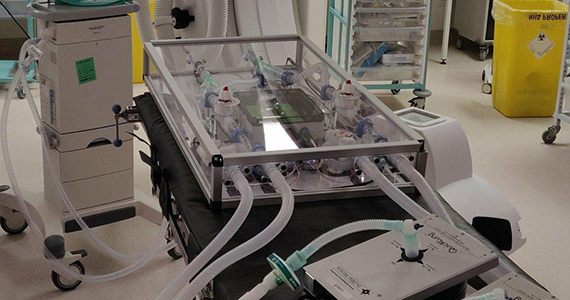Ventilator sharing device

At the start of the Covid-19 pandemic, a potential short fall of ventilators in hospitals was a concern.
The Royal Papworth Hospital in Cambridge, together with the Institute for Manufacturing, University of Cambridge, identified a need to develop a new device so, that if needed, two patients could simultaneously receive oxygen.
With support from the Cambridge Design Partnership, the team developed a ventilator sharing device which allows two patients to receive tailored respiratory support at the same time.
The device can measure and control the air flow to each patient individually and can be made from parts available in the UK supply chain. It is a simple design that can be set up and put away quickly and easily. The device has the potential to be of huge benefit to countries around the world where ventilators are in short supply, or in times of humanitarian crisis.
This short film shows how the combination of deep regulatory knowledge and robust design techniques of the Cambridge Design Partnership team along with the great conceptual and experimental work conducted by the IfM and Papworth Hospital made for a truly rapid development process.
Video - a new ventilating sharing device for Covid-19
About the device
The system was designed to incorporate respiratory parts that are available in the UK supply chain in a layout that facilitates parts to be easily changed and replaced. The overall ‘box unit’ provides isolated respiratory lines to two patients and enables quick assembly to a ventilator.
The IfM-designed readout meter delivers real-time measurement of tidal volume to each patient as well as monitoring the total pressure and airflow in the device. Easy-to-access valves enable fine tuning of air flow to match the requirements of each patient.
Initial details of the specification of the system are now freely available. This page will be updated with all the findings, full design and software when the tests are released so that if other communities across the world have to consider this emergency option in the event of a shortage of ventilators, they can copy and adapt the setup for their own needs.
Find out more about:
- System specification
- How the device could be used in hospitals
- Testing
- Other similar devices
- Collaboration and support









